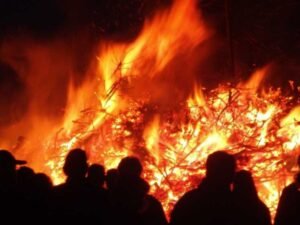When it comes to homeownership, what you see isn’t always what you get. Beneath the surface of freshly painted walls and shiny appliances may lie hidden issues that, if ignored, can lead to serious financial, structural, and health-related consequences.
Many homeowners focus on visible upgrades while overlooking what’s happening behind walls, under floors, or above ceilings. By the time stains, cracks, or leaks appear, the damage is often far worse than it seems—costing thousands in repairs and peace of mind.
How Environmental Stressors Leave a Mark on Your Home
The environment is constantly shaping, shifting, and, in some cases, damaging your home—even if you can’t see it happening. One of the most underrated causes of damage comes from natural forces like strong winds, heavy rain, and fluctuating temperatures. These elements work overtime, wearing down your property bit by bit.
Wind, in particular, poses a serious threat. It doesn’t just knock over trees or scatter debris—it can affect the structural integrity of your home. Shingles get ripped from rooftops, siding becomes dislodged, and gaps can form around windows and doors. These small breaks allow moisture to creep in, and that’s where the real problems begin. Once water enters your home, it can travel behind walls, seep into insulation, and create the perfect breeding ground for mold, mildew, and decay.
The real danger of wind-related damage is how silent it often is. Unless a piece of your roof is visibly missing or a tree crashes into your home, you might not even realize that damage has occurred. Over time, what starts as a few loose shingles or minor cracks can escalate into structural compromise and internal moisture buildup.
That’s why timely wind damage repair becomes critical—it can prevent long-term deterioration that remains hidden until it’s far more expensive to fix. A simple inspection and early intervention can spare you thousands in potential reconstruction costs later.
Mold: The Silent Destroyer in Your Walls
Mold isn’t just unsightly—it’s dangerous, persistent, and costly to eliminate once it spreads. Often forming in places with poor ventilation or high humidity, mold growth thrives behind drywall, under carpets, and within HVAC systems. Many homeowners don’t realize its presence until symptoms start appearing, such as a musty smell, unexplained health issues, or discoloration on the walls.
The trouble is that mold doesn’t stay in one spot. It multiplies rapidly, weakening the materials it feeds on and releasing spores into the air. These spores can compromise indoor air quality and potentially trigger respiratory problems, allergic reactions, and other health complications.
Ignoring early warning signs could lead to the need for full wall removals, professional remediation, and replacing parts of your home’s structure—not to mention the temporary displacement while repairs are underway. Mold removal is rarely a minor fix, and the longer it’s left untreated, the more extensive and expensive the damage becomes.
Electrical Wiring Problems That Lurk Unnoticed
Outdated or faulty wiring is another hidden menace that can go unnoticed until a fire hazard or system failure presents itself. Many older homes were built to handle a fraction of the electrical load we use today. With the modern dependence on electronics, appliances, and smart systems, outdated wiring simply can’t keep up.
Frayed wires, overloaded circuits, or improperly grounded systems are more than an inconvenience—they’re a fire risk. In many cases, the only indication that something is wrong is frequent breaker trips, flickering lights, or outlets that feel warm to the touch. Unfortunately, these symptoms often go ignored until it’s too late.
Electrical issues behind the walls can require complete rewiring, a costly and invasive process. Still, the financial cost pales in comparison to the damage that an electrical fire can cause. Preventive inspections by licensed electricians can uncover these risks before they become disasters.
Plumbing Leaks and Water Pressure Issues
Not all plumbing problems result in visible puddles or leaky faucets. Some of the most damaging water issues are the ones you never see—slow, hidden leaks behind walls or under floors. A pinhole leak in a copper pipe, for instance, might go unnoticed for months while silently soaking through wood, drywall, and insulation.
Over time, this moisture weakens structural components and invites mold to spread. Even more troubling is the silent buildup of water pressure problems. Excessive pressure can stress joints and valves, leading to sudden pipe bursts and extensive flooding. On the other end of the spectrum, low water pressure may be a sign of corrosion or blockage within pipes, both of which can compromise plumbing performance and lifespan.
The cost of replacing compromised piping, repairing water-damaged interiors, and restoring mold-infested areas adds up quickly. Routine inspections and pressure checks can help detect these issues early and save you from major reconstruction expenses.
Pest Infestations in Hidden Spaces
Insects and rodents don’t need a welcome mat to enter your home. All it takes is a tiny gap in the wall, an opening in the attic, or a break near the foundation. Once inside, pests like termites, carpenter ants, and rodents start causing silent destruction. Termites, in particular, are notorious for chewing through wood from the inside out, leaving surfaces untouched while hollowing out support beams.
Rodents, on the other hand, can chew through insulation, electrical wires, and even plastic piping. Their droppings can also pose serious health risks to your family. By the time the average homeowner realizes there’s a problem, significant damage has already been done—and the cost to treat the infestation and repair the damage can be extensive.
Pest problems are especially tricky because they often originate in spaces no one checks regularly—attics, crawlspaces, and within walls. Regular inspections and sealing of potential entry points can help prevent these intrusions.
What You Don’t See Can Hurt You
Every homeowner wants to believe their home is in good shape—especially when nothing seems out of place. But assuming all is well based only on what’s visible is a risky game. From environmental stress to internal leaks and infestations, the real threats to your home—and wallet—often lie behind walls and under floors.
Taking a proactive approach is the best defense. Routine inspections, timely maintenance, and paying attention to subtle warning signs can help catch issues before they spiral into costly disasters. Homeownership comes with enough expected expenses. Don’t let the unseen ones blindside you. A little vigilance today can prevent major financial setbacks tomorrow.










